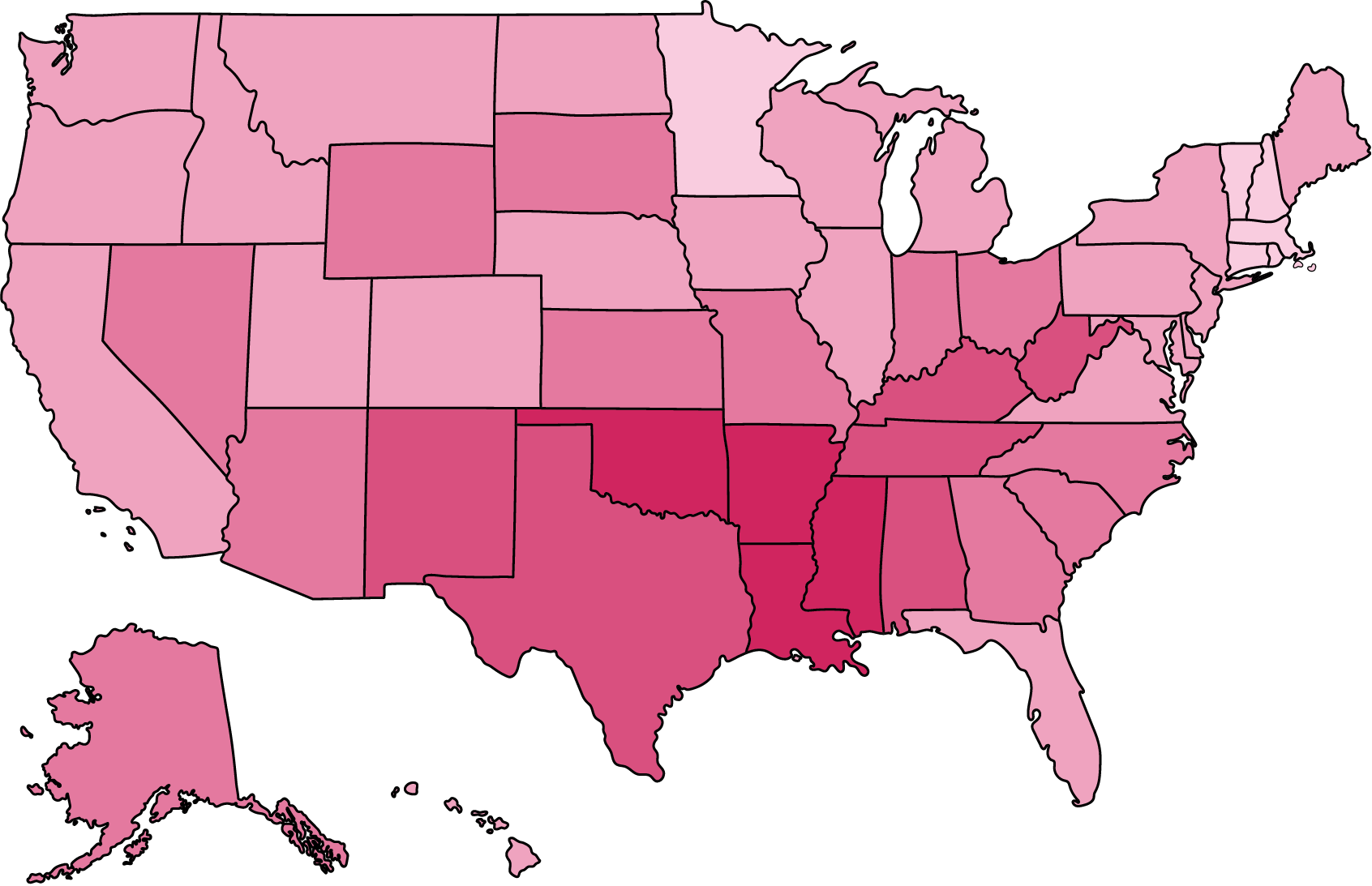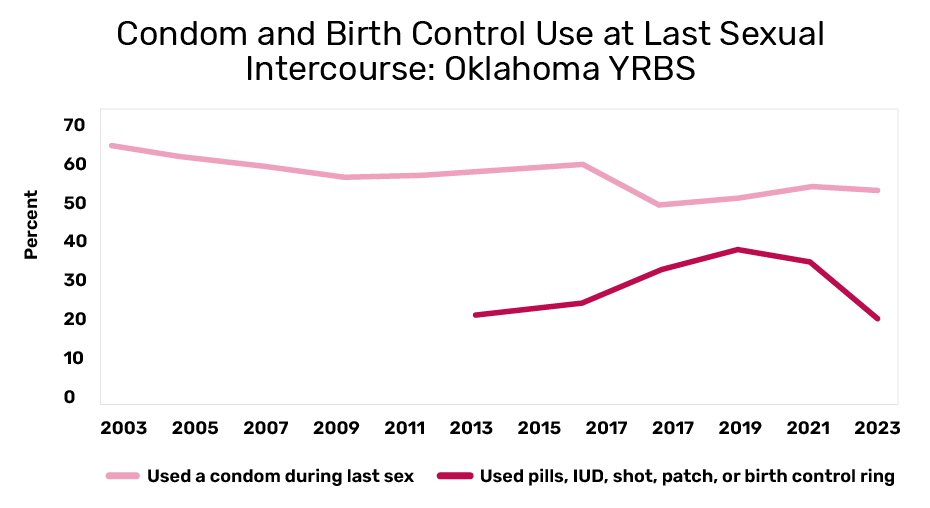Our Focus
Reducing Teen Pregnancy, STI's, and Sexual Abuse
Our youth deserve healthy and honest life-skills education without fear of embarrassment, shame, or judgment. Our programs are evidence-based and proven to be effective. Over the last twenty years, our efforts have contributed to a two-thirds (67%) decrease in the teen birth rate in Oklahoma County. While we're proud of that accomplishment, there is still a lot of work to do as our state remains among those with the highest teen birth rates in the nation, and Oklahoma County is the county with the largest number of teen births.

Oklahoma has the 5th highest teen birth rate for ages 15-19.
(Rate is the number of births per 1,000 females of the same age range.)
Total births to Oklahoma females aged 19 and younger in 2023. Of those teen mothers, 1,391 (nearly half, 48%) had not completed high school, and 435 (15%) had subsequent births.
Total births in Oklahoma County to females aged 19 and younger in 2023. Of those, 324 (over half, 53%) had not completed high school, and 94 (15%) were subsequent births.
Data from OK2SHARE/OSDH
For more data and factsheets, check the Healthy Teens OK! website:
Teen Pregnancy Often Leads To:
Low Education Attainment
Lack of Employable Skills
Health Problems
Family Instability
Poverty
Depression & Anxiety
• Low Education Attainment
• Lack of Employable Skills
• Health Problems
• Family Instability
• Poverty
• Depression & Anxiety
30% of girls that drop out of school cite pregnancy/parenting as the reason.
In 2023, almost half (48.2%) of reported cases of chlamydia, gonorrhea, and syphilis (all stages) were among adolescents and young adults aged 15–24 years.

The Whole Picture
We do more than combat teen pregnancy; we promote holistic adolescent health and wellness. We teach teens how to manage peer pressure, analyze media messages, protect their physical and emotional well-being, and build healthy relationships with their peers and trusted adults. Through our SHAPE Peer Education model, students learn how to be a leader, a role model, and an advocate. Our programs provide youth with important knowledge and skills that will help them during their school years and throughout their lives.
Performance Reports
We conduct regular program evaluations, working with the Health Promotion Sciences Department, Hudson College of Public Health at the University of Oklahoma Health Sciences Center (OU-HCOPH). Over the years, they have documented consistently positive results among the middle and high school youth participants. The most recent program evaluation reports are provided below.
A case study of SHAPE entitled, Peer Educators As Partners in Sexual Health Programming: A Case Study (2020), described the extensive process for recruiting and training the SHAPE high school peer educators. Prepared by the Department of Health and Kinesiology at Texas A&M University, it highlighted key factors that have made SHAPE so successful with middle school youth. Find a copy of the peer education case study below.
